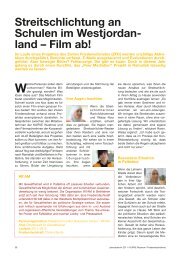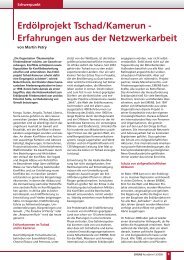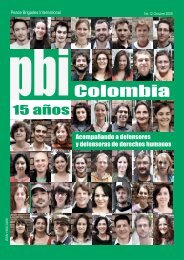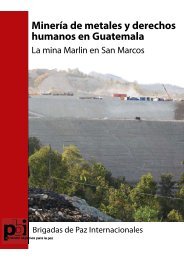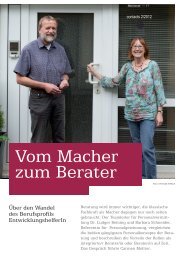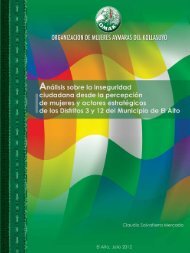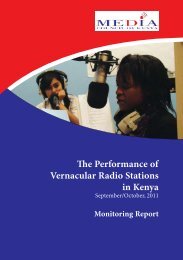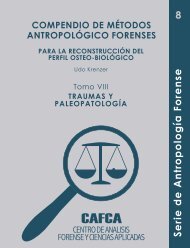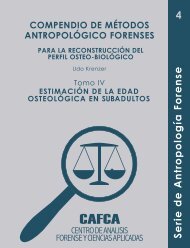Engaging with Victims and Perpetrators in Transitional ... - FriEnt
Engaging with Victims and Perpetrators in Transitional ... - FriEnt
Engaging with Victims and Perpetrators in Transitional ... - FriEnt
- No tags were found...
Create successful ePaper yourself
Turn your PDF publications into a flip-book with our unique Google optimized e-Paper software.
<strong>FriEnt</strong>/KOFF Workshop ReportS<strong>in</strong>ce 2003 34,000 paramilitaries have been demobilised. However, most of thesehave <strong>in</strong> fact been recruited just for the sake of imm<strong>in</strong>ent demobilisation. Also,they have not been systematically checked for their crim<strong>in</strong>al records – notsurpris<strong>in</strong>gly as the special unit of the prosecutor’s office lacks staff <strong>and</strong> resources.Furthermore, demobilisation has taken place <strong>in</strong> exchange for guarantees ofconcessions <strong>in</strong> punishment of their crimes.S<strong>in</strong>ce June 2005 the Justice <strong>and</strong> Peace Law / Law 975 has provided a legalframework for demobilisation. Only 7% of the fighters have been demobilisedunder this law, all others tak<strong>in</strong>g place under m<strong>in</strong>or presidential decrees <strong>with</strong>,aga<strong>in</strong>, no guarantees <strong>and</strong> extremely poor levels of documentation of the fighters<strong>and</strong> their arms.However, there has been a substantial reduction <strong>in</strong> violence (e.g. assass<strong>in</strong>ationsby 50%) <strong>in</strong> some regions. But the paramilitary structures rema<strong>in</strong> <strong>in</strong>tact: Thereare records of cont<strong>in</strong>uous armed presence <strong>in</strong> 24 of 32 prov<strong>in</strong>ces. Economically, nopressure is put on paramilitaries to h<strong>and</strong> <strong>in</strong> for reparation the goods they haveacquired through their illegal activities - the ma<strong>in</strong> reparation fund still be<strong>in</strong>gempty <strong>and</strong> more than six million hectares of l<strong>and</strong> formerly owned by now l<strong>and</strong>lesspeasants are rema<strong>in</strong><strong>in</strong>g <strong>in</strong> their h<strong>and</strong>s. Socially, most groups are present <strong>in</strong> thevillages <strong>and</strong> towns <strong>and</strong> are recognised as the key actors <strong>in</strong> the economically mostreward<strong>in</strong>g activities, legal as well as illegal ones (e.g. they are <strong>in</strong> control of decentralisedhealth system on the Atlantic coastal region <strong>and</strong> of large proportionsof drug production <strong>and</strong> traffick<strong>in</strong>g). In general, power relations have notchanged. Paramilitaries who have risen to become the most important humanrights violators rema<strong>in</strong> <strong>in</strong> a strong armed <strong>and</strong> civil position.The victims' position/ roleNone of these <strong>in</strong>itiatives have accorded victims or their representatives a majorrole. Over 30,000 persons claimed their rights aga<strong>in</strong>st the PPMM <strong>with</strong> theNational Commission for Reconciliation <strong>and</strong> Reparation <strong>and</strong> the special Justice<strong>and</strong> Peace Prosecutor’s Department. But there has never been a clear recognitionof the victims of the paramilitaries by the government. On the contrary, press<strong>and</strong> public generally identify victims <strong>with</strong> guerrillas. A number of victims have <strong>in</strong>fact been assass<strong>in</strong>ated shortly after claim<strong>in</strong>g their rights <strong>in</strong> public hear<strong>in</strong>gs.Economic support is spent on demobilised ex-combatants, <strong>and</strong> victims have noaccess to significant funds: demobilised persons get 10-15 times the resources ofan IDP.The semi-public hear<strong>in</strong>gs do not sufficiently guarantee access to victims <strong>and</strong>human rights organisations, <strong>and</strong> prosecutors do not <strong>in</strong> general question theposition of the paramilitaries, <strong>and</strong> supporters of paramilitaries blockade build<strong>in</strong>gswhere hear<strong>in</strong>gs take place. As <strong>in</strong> South Africa or <strong>in</strong> Northern Irel<strong>and</strong>,paramilitaries <strong>in</strong> Colombia consider themselves the “defenders of the country”who are fight<strong>in</strong>g for a just cause <strong>and</strong> do not admit to hav<strong>in</strong>g committed grosshuman rights violations.In this sense, it is clear that space for transformation is very limited if not nonexistent<strong>and</strong> the guarantee of non-recurrence is more than limited. Everyth<strong>in</strong>gtakes place <strong>with</strong><strong>in</strong> the structural framework which caused the conflict <strong>in</strong> the firstplace.13



